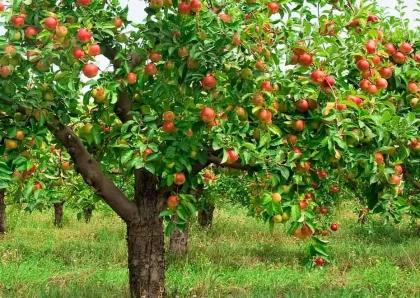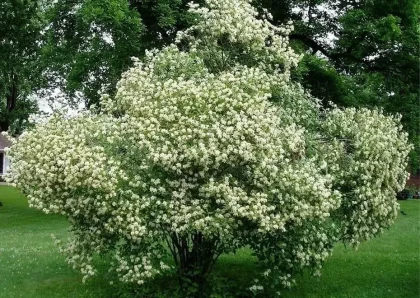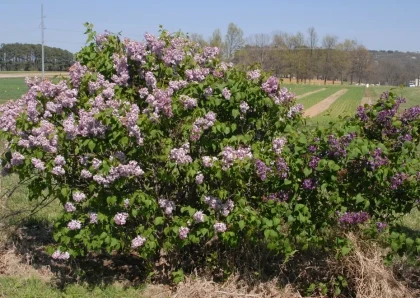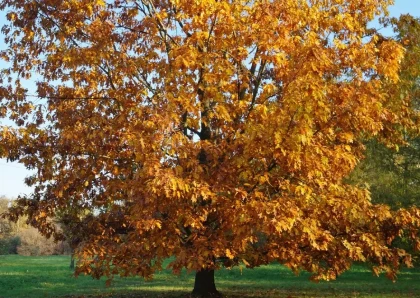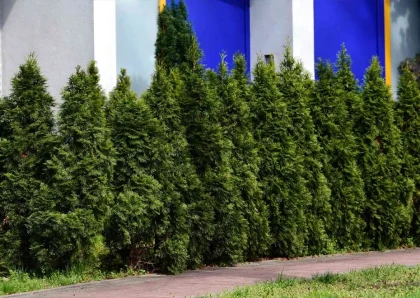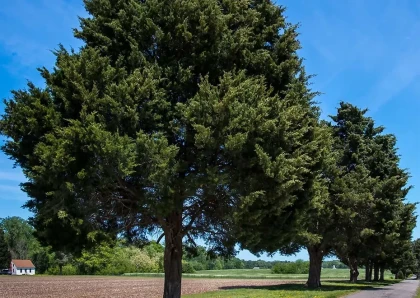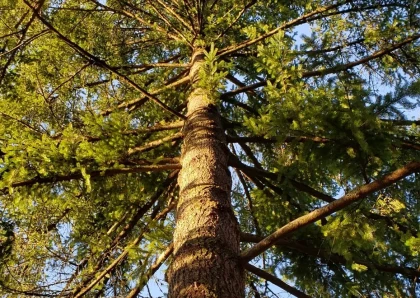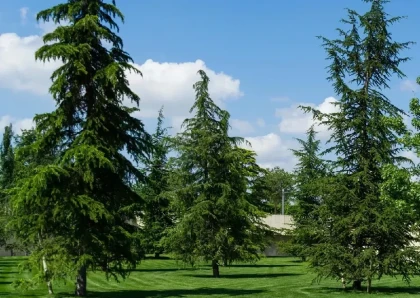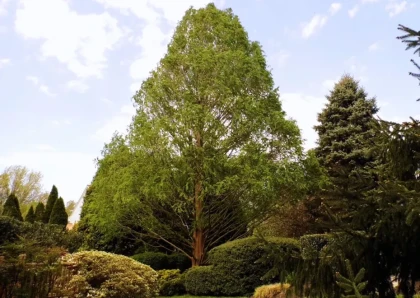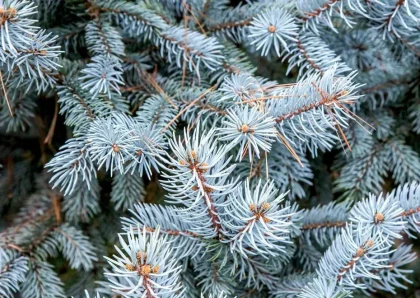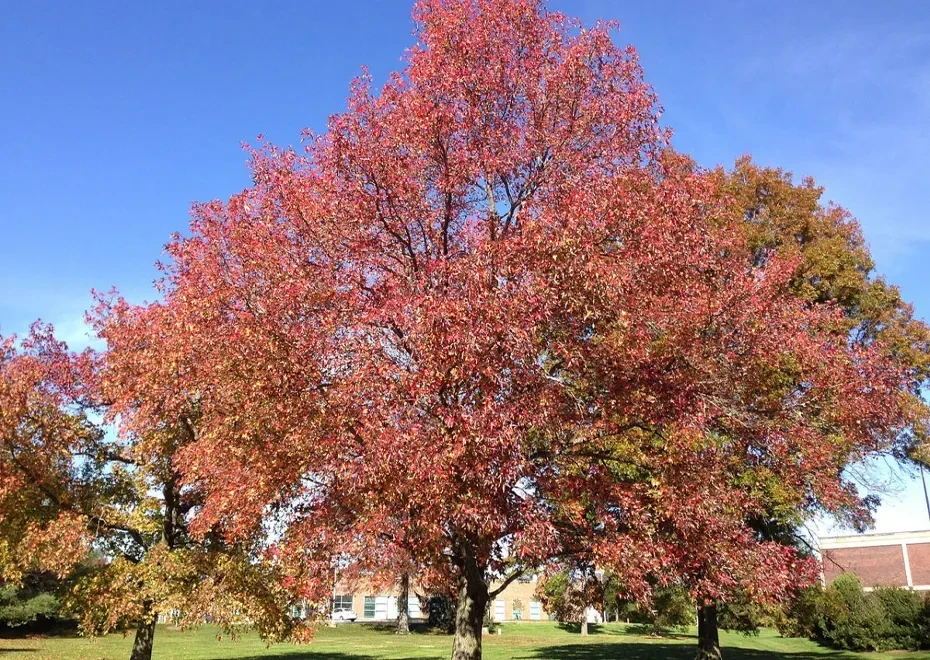
American Sweetgum Tree
Overview
Description
The American Sweetgum tree (Liquidambar styraciflua) is a deciduous hardwood tree native to the southeastern United States. It belongs to the Altingiaceae family and is known for its vibrant fall foliage and distinctive star-shaped leaves. The American Sweetgum tree typically grows to a height of 60 to 80 feet (18 to 24 meters), with some specimens reaching up to 100 feet (30 meters). When young, the tree has a pyramidal to conical shape, but as it matures, its crown becomes more rounded and spreading. In addition to its ornamental value, the American Sweetgum tree provides various benefits. It serves as a habitat for wildlife, as its dense foliage provides shelter and nesting sites for birds and small mammals. The "gumballs" or spiky seed pods produced by the tree are an essential food source for wildlife, including birds and squirrels. The tree also contributes to carbon sequestration, absorbing carbon dioxide during photosynthesis and storing it as carbon. The wood of the American Sweetgum tree is used in various applications, including furniture, cabinetry, flooring, veneers, and woodworking projects. The tree's gum resin has historical medicinal uses and was once used as chewing gum by Native Americans. However, it's worth noting that the spiky seed pods of the American Sweetgum tree can be a nuisance when they drop on the ground, and the tree's shallow root system can sometimes cause issues with hardscapes or structures nearby. Additionally, the tree may be susceptible to certain pests and diseases.
Types of American Sweetgum Tree
Liquidambar styraciflua 'Rotundiloba'
This variety is known for its rounded and unlobed leaves, unlike the typical star-shaped leaves of the species. It has excellent fall color and is a popular choice for landscapes.
Liquidambar styraciflua 'Slender Silhouette'
'Slender Silhouette' is a narrow, columnar variety of the American Sweetgum tree. It is ideal for small spaces and urban landscapes where vertical growth is preferred.
Liquidambar styraciflua 'Worplesdon'
'Worplesdon' is well-known for its outstanding fall foliage, which includes shades of orange, red, and purple. It is a beautiful addition to any garden or landscape.
Liquidambar styraciflua 'Palo Alto'
'Palo Alto' is a compact and slow-growing variety, making it suitable for smaller gardens or urban landscapes with limited space.
Liquidambar styraciflua 'Moraine'
'Moraine' is prized for its excellent red fall color. It is a vigorous and adaptable cultivar that can thrive in various soil types.
Liquidambar styraciflua 'Golden Treasure'
As the name suggests, 'Golden Treasure' displays striking golden-yellow foliage in the fall, adding a unique touch to the landscape.
Liquidambar styraciflua 'Festival'
'Festival' is known for its strong central leader and attractive fall colors, making it a popular choice for landscaping and urban environments.
Wood Products from American Sweetgum Tree
Furniture
The wood of the American Sweetgum tree is commonly used in the manufacture of furniture. Its attractive grain patterns and moderate hardness make it suitable for crafting various indoor furniture pieces, such as tables, cabinets, and chairs.
Cabinetry
Sweetgum wood is also utilized in cabinetry due to its smooth texture and workability. It can be used to create beautiful kitchen cabinets, bathroom vanities, and other storage units.
Veneers
The straight and uniform grain of Sweetgum wood makes it suitable for producing veneers. Veneers are thin slices of wood used to cover less attractive or cheaper materials, enhancing the appearance of furniture and other surfaces.
Flooring
Sweetgum wood can be milled into durable and attractive hardwood flooring. Its warm colors and natural patterns add character to living spaces.
Paneling
Sweetgum wood paneling is used in interior design to add a warm and welcoming ambiance to homes, offices, and other buildings.
Architectural Millwork
Sweetgum wood is employed in various architectural millwork applications, including moldings, trim, and decorative elements, adding detail and charm to buildings.
Wood Crafts
Craftsmen and artists often use Sweetgum wood for carving, turning, and other woodworking projects. Its fine texture and ease of working make it a favorite for creating intricate wooden crafts and sculptures.
Firewood
While not a finished wood product, American Sweetgum wood is also used as firewood due to its high energy content and ability to burn well.
Benefits of American Sweetgum Tree
Shade and Landscaping
American Sweetgum trees are planted in parks, residential areas, and public spaces to provide shade and enhance the beauty of landscapes. Their attractive star-shaped leaves and vibrant fall colors make them popular choices for ornamental purposes.
Wildlife Habitat
The tree's dense foliage provides shelter and nesting sites for various birds and small mammals. The "gumballs" or seed pods produced by the tree serve as a food source for wildlife, including birds and squirrels.
Carbon Sequestration
Like all trees, American Sweetgum trees absorb carbon dioxide during photosynthesis and store it as carbon, contributing to reducing greenhouse gas concentrations in the atmosphere.
Erosion Control
The extensive root system of Sweetgum trees helps stabilize soil and prevent erosion, particularly in areas near water bodies or on slopes.
Timber and Wood Products
The wood of the American Sweetgum tree is valuable and used in the production of furniture, cabinetry, veneers, flooring, and various woodworking projects.
Medicinal Uses
Historically, the gum resin obtained from the tree was used by Native Americans for medicinal purposes. It was believed to have healing properties, including as a remedy for coughs and sore throats.
Aromatic Resin
The tree's aromatic resin, often referred to as "sweet gum," was historically used in perfumes, incense, and traditional ceremonies.
Honey Production
Bees and other pollinators are attracted to the tree's flowers, leading to honey production from the nectar.
Bioenergy
American Sweetgum wood can be used as a renewable source of bioenergy when harvested sustainably for biomass production.
Cons of Using American Sweetgum Tree
Messy Seed Pods
The tree produces spiky seed pods, often referred to as "gumballs" or "spiky balls." These pods can be a nuisance, creating litter on lawns, sidewalks, and driveways, which may require regular cleanup.
Root System
The American Sweetgum tree has an extensive and shallow root system, which may cause problems in certain situations. The roots can disrupt sidewalks, driveways, and other hardscape elements, and they may also invade nearby garden beds or water pipes.
Allergenic Potential
The pollen produced by Sweetgum trees can be allergenic to some individuals, causing respiratory issues and allergic reactions, particularly during the flowering season.
Susceptibility to Pests and Diseases
American Sweetgum trees can be susceptible to various pests and diseases, such as sweetgum scale insects and the fungal disease sweetgum blight (Botryosphaeria spp.), which can negatively impact the tree's health and appearance.
Limited Range
The American Sweetgum tree is native to the southeastern United States and may not be well-suited to regions with extreme cold temperatures or arid conditions.
Tree Size
Sweetgum trees can grow to be quite large, which may not be suitable for smaller urban landscapes or confined spaces.
Hardness and Workability
While Sweetgum wood is used in various wood products, its hardness and workability may not be as favorable as some other hardwood species. It can be prone to splintering or warping if not properly dried and treated.
Tips for Planting and Maintaining American Sweetgum Tree
Site Selection
Choose a planting location that offers full sun to partial shade and well-drained soil with a slightly acidic to neutral pH. Avoid areas near hardscapes or structures to prevent potential root-related issues.
Planting Time
Optimal planting times are early spring or late fall when the soil is moist and temperatures are moderate, providing the tree ample time to establish its root system before extreme weather conditions.
Planting Procedure
Dig a hole twice as wide as the root ball but no deeper than its height. Position the tree in the hole, ensuring the top of the root ball is level with the surrounding soil. Backfill the hole with soil and water thoroughly to eliminate air pockets.
Mulching
Apply a 2 to 4-inch layer of organic mulch around the base of the tree, leaving space around the trunk. Mulch aids in moisture retention, weed suppression, and protection of the roots from temperature fluctuations. Avoid piling mulch against the trunk to prevent rot.
Watering
During the first year after planting, keep the tree well-watered to facilitate root establishment. Water deeply and consistently, especially during dry spells. Once established, Sweetgum trees are moderately drought-tolerant but will benefit from occasional deep watering during prolonged dry periods.
Pruning
Prune the tree during its dormant season to remove dead, damaged, or crossing branches. Avoid extensive pruning that could stress the tree. As Sweetgum trees typically have a strong central leader, shaping pruning is often unnecessary.
Fertilizing
If planted in nutrient-poor soils, consider applying a balanced fertilizer in early spring to promote healthy growth. However, Sweetgum trees can often thrive without additional fertilization, particularly in fertile soils.
Pest and Disease Management
Regularly inspect the tree for signs of pests or diseases, such as scale insects or sweetgum blight. Address any issues promptly with appropriate treatment or seek advice from a certified arborist.
Monitoring
Continuously observe the tree's growth, fall colors, and the wildlife it attracts. Regularly check on the tree's health to detect any issues early and ensure its continued vitality.
Conclusion
The American Sweetgum tree (Liquidambar styraciflua) is a captivating deciduous hardwood tree native to the southeastern United States. With its distinctive star-shaped leaves and vibrant fall foliage, it adds beauty and charm to landscapes. The tree serves as a habitat for wildlife, aids in carbon sequestration, and its wood finds use in various applications. However, it's essential to be mindful of potential drawbacks, such as the spiky seed pods and shallow root system. Overall, the American Sweetgum tree remains a valuable and appreciated addition to both natural environments and urban landscapes.
FAQs
1. What is the scientific name of the American Sweetgum tree?
The scientific name of the American Sweetgum tree is Liquidambar styraciflua.
2. What are the main features of the American Sweetgum tree?
The American Sweetgum tree is known for its star-shaped leaves and vibrant fall foliage, showcasing shades of red, orange, yellow, and purple.
3. How tall does the American Sweetgum tree typically grow?
American Sweetgum trees usually reach heights of 60 to 80 feet (18 to 24 meters), with some exceptional specimens growing up to 100 feet (30 meters).
4. Does the American Sweetgum tree provide benefits to wildlife?
Yes, the tree's dense foliage offers shelter and nesting sites for various wildlife, and the spiky seed pods, known as "gumballs," serve as a food source for birds and small mammals.
5. How does the American Sweetgum tree contribute to the environment?
The tree aids in carbon sequestration by absorbing carbon dioxide during photosynthesis and storing it as carbon, helping to reduce greenhouse gas concentrations in the atmosphere.
6. What are the common uses of American Sweetgum wood?
American Sweetgum wood finds application in furniture, cabinetry, flooring, veneers, and various woodworking projects.
7. Are there any potential drawbacks to planting American Sweetgum trees?
Yes, the tree's spiky seed pods can be a nuisance when they fall on the ground, and its shallow root system may cause issues with nearby hardscapes or structures. Additionally, the tree may be susceptible to certain pests and diseases.
8. When is the best time to plant American Sweetgum trees?
The optimal planting times are early spring or late fall when the soil is moist and temperatures are moderate. This allows the tree sufficient time to establish its root system before extreme weather conditions.
9. How can I care for an American Sweetgum tree?
Proper care includes providing well-drained soil, watering during the first year after planting to facilitate root establishment, regular pruning to remove dead or damaged branches, and monitoring for pests and diseases.
10. Is the American Sweetgum tree suitable for both natural and urban environments?
Yes, the American Sweetgum tree is appreciated for its beauty and benefits, making it a valuable addition to both natural landscapes and urban environments.
No listings available
Related Products
Golden Jubilee Peach Tree
Prunus persica 'Golden Jubilee' is a specific cultivar of peach tree. It is a deciduous fruit tree belonging to the Rosaceae family. 'Golden Jubilee'...
Gray Dogwood
Cornus racemosa, commonly known as the gray dogwood or northern swamp dogwood, is a deciduous shrub native to eastern North America. It belongs to...
Common Fragrant Lilac
Syringa vulgaris, commonly known as the Common Lilac or French Lilac, is a deciduous shrub belonging to the genus Syringa in the olive family...
European Beech Tree
The European Beech (Fagus sylvatica) is a deciduous tree species native to much of Europe, including parts of western Asia. It is one of...
Emerald Arborvitae Tree
The Emerald Arborvitae (Thuja occidentalis 'Smaragd') is a popular evergreen tree or shrub in landscaping and gardening. It belongs to the cypress family (Cupressaceae)...
Eastern Red Cedar Tree
The Eastern Red Cedar, scientifically known as Juniperus virginiana, is a species of evergreen tree native to eastern North America. It belongs to the...
Douglas Fir Tree
The Douglas Fir (Pseudotsuga menziesii) is an evergreen coniferous tree that belongs to the Pinaceae family. It is one of the most common and...
Deodar Cedar Tree
The name "Deodar" is derived from the Sanskrit words "deva" (meaning "god") and "daru" (meaning "wood" or "tree"), hence it is often referred to...
Dawn Redwood Tree
The Dawn Redwood tree, scientifically known as Metasequoia glyptostroboides, is a deciduous coniferous tree that belongs to the family Cupressaceae. It is a unique...
Colorado Blue Spruce Tree
The Colorado Blue Spruce, scientifically known as Picea pungens, is a species of coniferous tree belonging to the Pinaceae family. It is native to...





